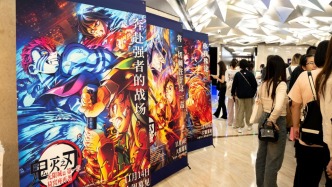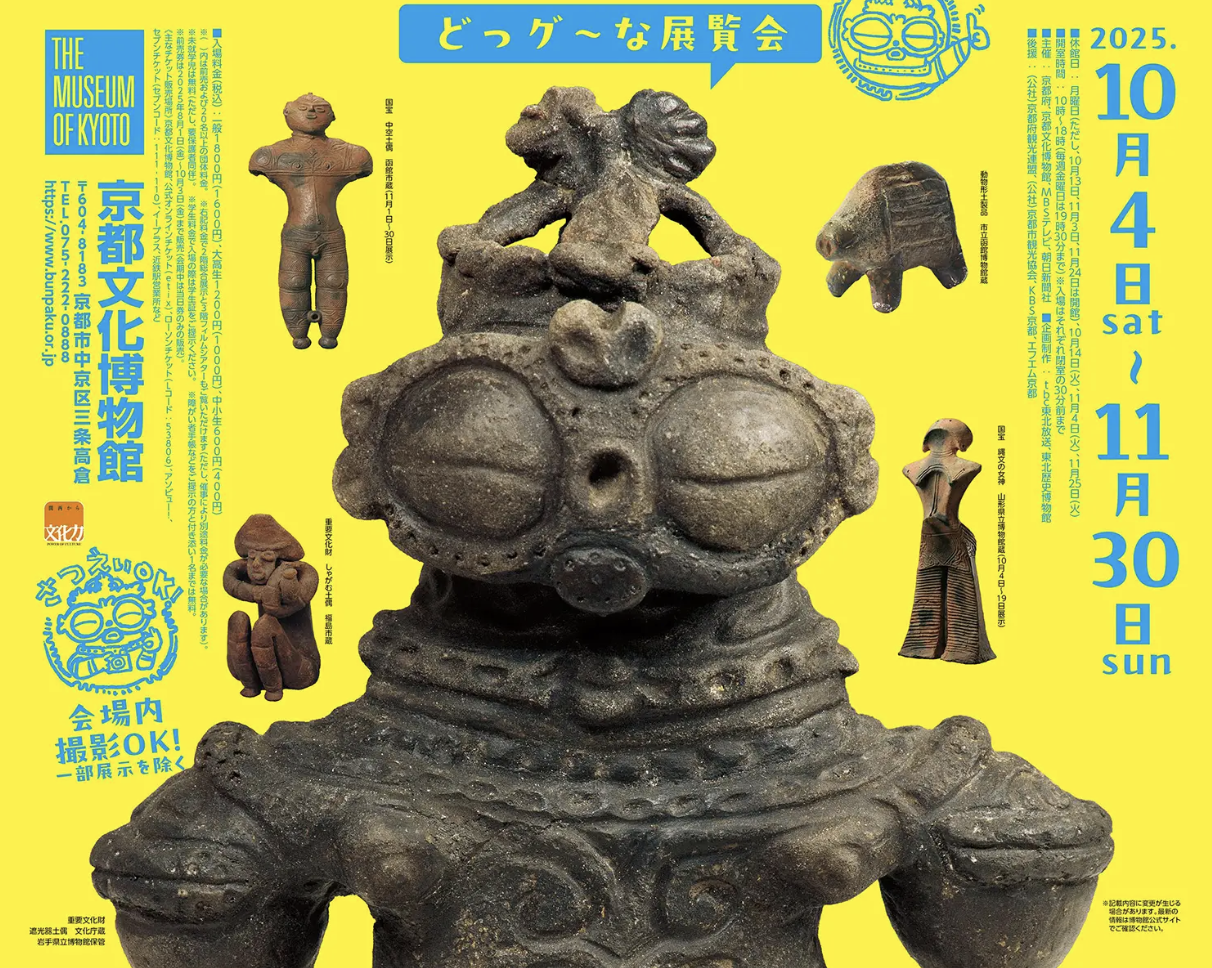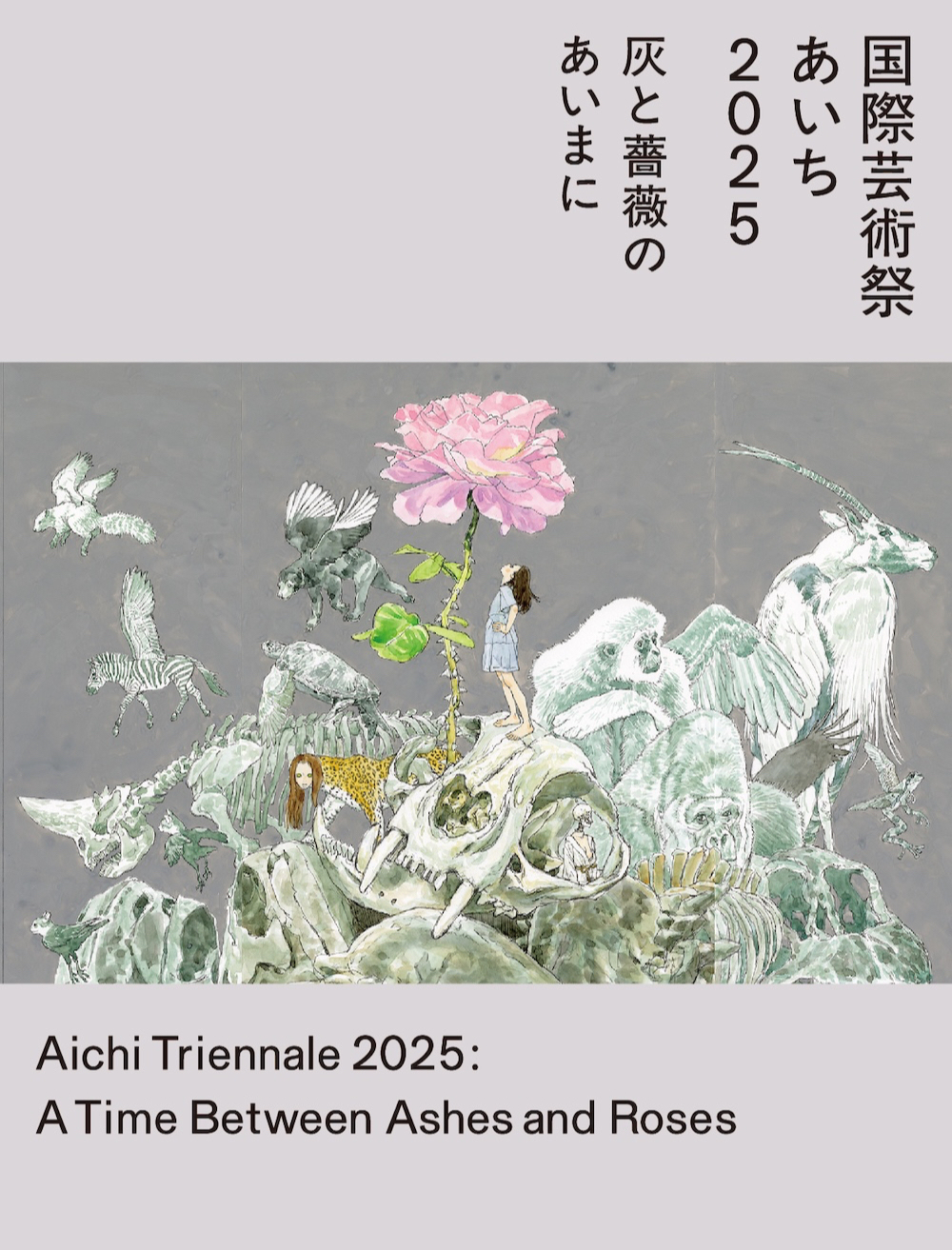
When it comes to Japanese ukiyo-e, most people will inevitably think of "The Great Wave off Kanagawa" in Katsushika Hokusai's "Thirty-six Views of Mt. Fuji".
In fact, this world-renowned woodblock print is now undisputedly synonymous with ukiyo-e art. However, when we are constantly interpreting the painter's painting language, the production technology of Ukiyo-e prints, and the influence of this kind of arts and crafts on Western Impressionist masters, we may have a question in our minds. How about Japanese art, which has been deeply influenced by Chinese painting since the Tang Dynasty? , is the famous "The Great Wave off Kanagawa" an absolute original of Katsushika Hokusai? Many ukiyo-e works are deeply influenced by ancient Chinese paintings, but what about this masterpiece?

Katsushika Hokusai, The Great Wave off Kanagawa, Ukiyo-e print, length 25.7 cm, width 37.9 cm [US] Collection of the Metropolitan Museum of Art, New York
When Ukiyo-e art arrived in Europe in the second half of the 19th century through business travel and the 1867 World Exposition, it was dissatisfied with a group of decadent and rigid academics at that time, but was favored by young painters who were trying to create a new artistic language and expression. From Manet, Monet and Degas at the beginning, to Van Gogh, Lautrec and Bonnard later, the obsession of artists such as Impressionists and Post-Impressionists with ukiyo-e art is now widely known. Ukiyo-e woodblock print art's two-dimensional expressive technique, composition method completely different from Western painting, clear object outline, eye-catching color block combination and other features have been absorbed and used for reference by the above-mentioned masters in their respective works to varying degrees. . Among them, painters who are good at painting landscapes, such as Monet and Van Gogh, especially prefer Katsushika Hokusai's "Thirty-six Views of Mt. Some of the landscape paintings of the two have absorbed the traditional western linear perspective, but they also contain the unique composition perspective, color relationship and customs of Japanese Ukiyo-e. Katsushika Hokusai learned linear perspective from Western prints that arrived in Japan via the Dutch maritime trade, and then incorporated it into traditional Ukiyo-e art, forming a new "variant" combining East and West. Although the stormy waves in the foreground of "The Great Wave off Kanagawa" are impressive, the clear Mt. It can be seen that the obsession and admiration of European painting masters in the second half of the 19th century for ukiyo-e stemmed from their familiar painting language cognition, and were inspired by it to find a new expression method different from the traditional ones. "The Great Wave off Kanagawa" was hung in the kitchen by Monet, and its composition is now considered by academics to have inspired Van Gogh's handed down classic "Starry Night", and even became the composition of "The Sea, Three Symphonies for Orchestra" by composer Debussy "Small Pieces" (referred to as "The Sea") and was used as the cover of the first edition of the score... However, this masterpiece considered "original" by countless Western artists, in addition to incorporating Western linear perspective into the painting , and obviously borrowed from the expressive techniques of ocean waves in traditional Chinese painting. For example, from the "Water Map" volume by Ma Yuan in the Southern Song Dynasty to the "Huangliu Jujin Map" by Chen Hongshou in the Ming Dynasty, and then to the "River and Sea Waves Method" described in the "Mountain and Stone Spectrum" chapter of "Mustard Seed Garden Painting Biography" in the Qing Dynasty, All of these make the waves in Katsushika Hokusai's works seem "well-founded" and not original.

"Mustard Seed Garden Painting Biography" Painting the River and Sea Waves

"Mustard Seed Garden Painting Biography" Painting Stream Ripples
In Katsushika Hokusai's "The Great Wave off Kanagawa", the towering giant waves occupying almost half of the screen on the left side of the screen are undoubtedly the biggest highlight of the work, among which the waves with a hundred-foot wave tip shaped like a tiger's claw are particularly impressive to the viewer. However, about 700 years earlier than Katsushika Hokusai's work, Ma Yuan in my country's Southern Song Dynasty was already using this expressive technique to outline waves. As landscape painting matured in the Song Dynasty, painters also began to pay attention to expressing the shape of water. In the "Water Picture" volume collected by the Palace Museum, Ma Yuan represented water surfaces in different states in the form of a total of twelve single-frame albums. There are sparkling and calm waves, and there are rolling waves and choppy waves. In the third section of "Layered Waves", the painter used orderly lines to express the violently undulating water surface. The waves rolled up in the foreground wave valleys protrude forward like tree branches, with claw-shaped waves. prototype. However, in the tenth paragraph "Yunshu Waves", the water vapor under the clouds and mist makes more blank space replace the water surface, but a close-up of a giant wave is shown in the center of the foreground, and several hollow circles are thrown out. Refers to the water splash, and the spray whipped up by the waves in front of you is as concrete as the outstretched tiger's claws. The claw-shaped spray in Ma Yuan's "Water Picture" volume has since become a symbol of "visible" water in Chinese landscape paintings. Before this work was collected by the Qianlong Palace of the Qing Dynasty, it was passed among the people for many years, and many collectors had their "life experience", which also allowed the iconic wave elements in this work to be widely spread, and have been expressed by famous masters of later dynasties. Reference and inheritance in the theme of "water".

(Southern Song Dynasty) Ma Yuan Water Map·Layered Waves, ink and color on silk, 26.8 cm in length and 41.6 cm in width, collected by the Palace Museum
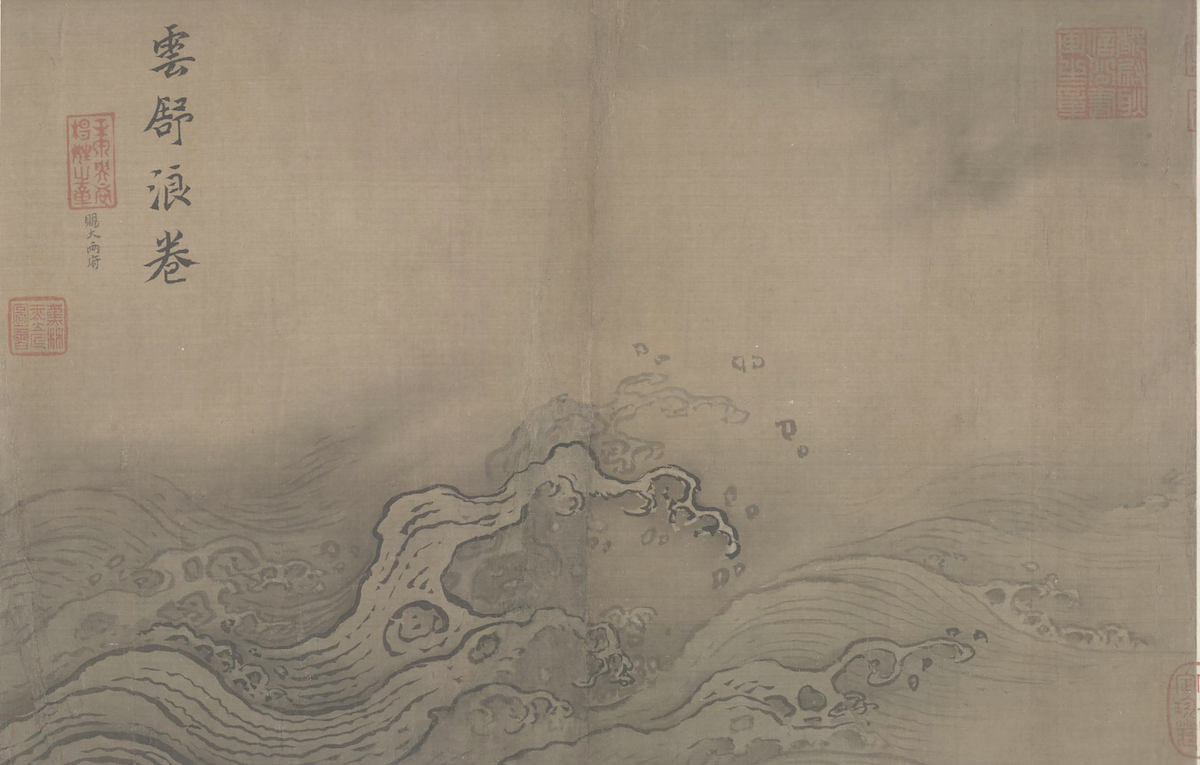
(Southern Song Dynasty) Ma Yuanshui Tu·Yun Shulang scroll ink and color on silk 26.8cm x 41.6cm Palace Museum
If the claw-shaped waves in Ma Yuan's "Water Picture" volume in the Southern Song Dynasty are more complicated and more imposing, then the "Huangliu Jujin Picture" in the octavo "Miscellaneous Painting Picture" by Chen Hongshou (styled Laolian) in the Ming Dynasty is like a tiger's claw. The waves are simple and cute, and they are quite similar to those drawn by Katsushika Hokusai in "The Great Wave off Kanagawa". "Yellow Flow Jujin Map" presents the turbulent river between the two banks in a plane-like way of overlooking. There are several fishing boats docked at the bottom of the plain on the right bank, and the dense bamboo forest on the opposite bank. The three small boats look quite small in the river, and they are moving against the current in the turbulent river. Chen Hongshou injects his witty painting style into the waves, and all the waves that arise are protruding out like tiger claws. Although there is no concrete image in Ma Yuan's works, the rather humorous interpretation also allows the viewer to comprehend at a glance why the painting is things. Although Chen Hongshou's works never entered Japan, and Katsushika Hokusai could not come into contact with the original works, it is an indisputable fact that Japan in the Edo period loved Chen Laolian's works. Mao Qiling, who wrote "Chen Hongshou's Biography", recorded Dongying's admiration for Chen Hongshou's paintings: "North Korea, Wuliangha, Japan, Samarkand, and Uszang buy lotus paintings, and they pay attention to their integrity. Thousands of families. In the eastern part of Yongdong, Yuan Kun was poor. He was a bookkeeper for foreign ships. Two pieces of bamboo were cut from the Tibetan lotus paintings. They will be returned to the Japanese master. The master was overjoyed, and gave them a banquet. They paid them with bags and pearls, and passed on the brushes." However, However, there are still very few collectors who have the conditions to buy authentic works of painters such as hand scrolls and albums. Chen Laolian had a huge influence on Japanese art, especially many figure paintings in Ukiyo-e are inseparable from the traces of their shapes. Japanese painters learned from Chen Laolian mainly from prints and Ming Dynasty book illustrations. Before Japan's commercial printing flourished, Ming illustrated books had arrived in Japan as rare commodities for elite collectors, and later achieved wider circulation and dissemination through reprints issued by Japanese publishers. Among them, Chen Hongshou's classic line drawing character print "Water Margin Leaves" was spread to Japan through book illustrations, and was still copied and reprinted in the middle of Edo period more than 100 years after his death. Katsushika Hokusai also drew a large number of illustrations for "Water Margin", which was quite popular in Japan at that time, and printed them into "New Edition of Water Margin Paintings". He obviously had contact with the illustrations of Chen Laolian's prints, but there is still no direct evidence of whether he has seen the waves depicted by the latter in the reprinted books handed down to Japan.

(Ming) Miscellaneous Paintings by Chen Hongshou·Huangliu Jujin, ink and color on silk, 30.2 cm in length and 25.1 cm in width, collected by the Palace Museum
Although Katsushika Hokusai did not have the opportunity to witness Ma Yuan's "Water Picture" volume and Chen Hongshou's "Miscellaneous Painting Picture" volume, he did earnestly study a handbook of Qing Dynasty painting that was handed down to Japan and published in Japan—the famous "Mustard Seed Garden" "Painting Biography". As a painting model, the first collection of "Mustard Seed Garden Painting Biography" was overprinted in my country in 1679, and then landed in Japan in 1724, and was widely circulated in Ukiyo-e circles. Long before Katsushika Hokusai became famous, he came into contact with "The Painting of the Mustard Seed Garden". Garden Painting Biography" draws a set of "Hokusai Manga". There is a famous saying of Katsushika Hokusai in the history of art: "I was brought up by "The Painting of the Mustard Seed Garden"". Although it is impossible to verify the authenticity, it is an indisputable fact that he studied this book for many years. The "River and Sea Waves Method" in the "Mountain and Rock Spectrum" chapter of "Mustard Seed Garden Painting Biography" has a detailed description of how to present waves: "The method of painting rivers and sea waves: mountains have strange peaks, and water also has strange peaks. Rocks are especially angry, and huge waves Paishan, the sea melts at the beginning of the month, and the tide is like a white horse. At this time, there are many mountains and mountains everywhere. Wu Daoxuan paints water, and there is sound all night. He not only paints water, but also is good at painting style; The painting style, and the ability to paint waves that are not inferior to the wind, and the ability to paint water is complete." What is eye-catching is that the corresponding illustrations below the text make us seem to see the volume of Ma Yuan's "Water Picture" The "combination" of the wave valley in Chen Hongshou and the tiger's claw waves in Chen Hongshou's "Miscellaneous Paintings". From this point of view, the water painting techniques inherited from the masters of all dynasties in my country were popular in Japan directly through the "Mustard Seed Garden Painting Biography" in the Qing Dynasty, and had a huge impact on the ukiyo-e art. Katsushika Hokusai, as a beneficiary, obviously studied the techniques in the book carefully, and "transplanted" this form of expression into his most famous "The Great Wave off Kanagawa".
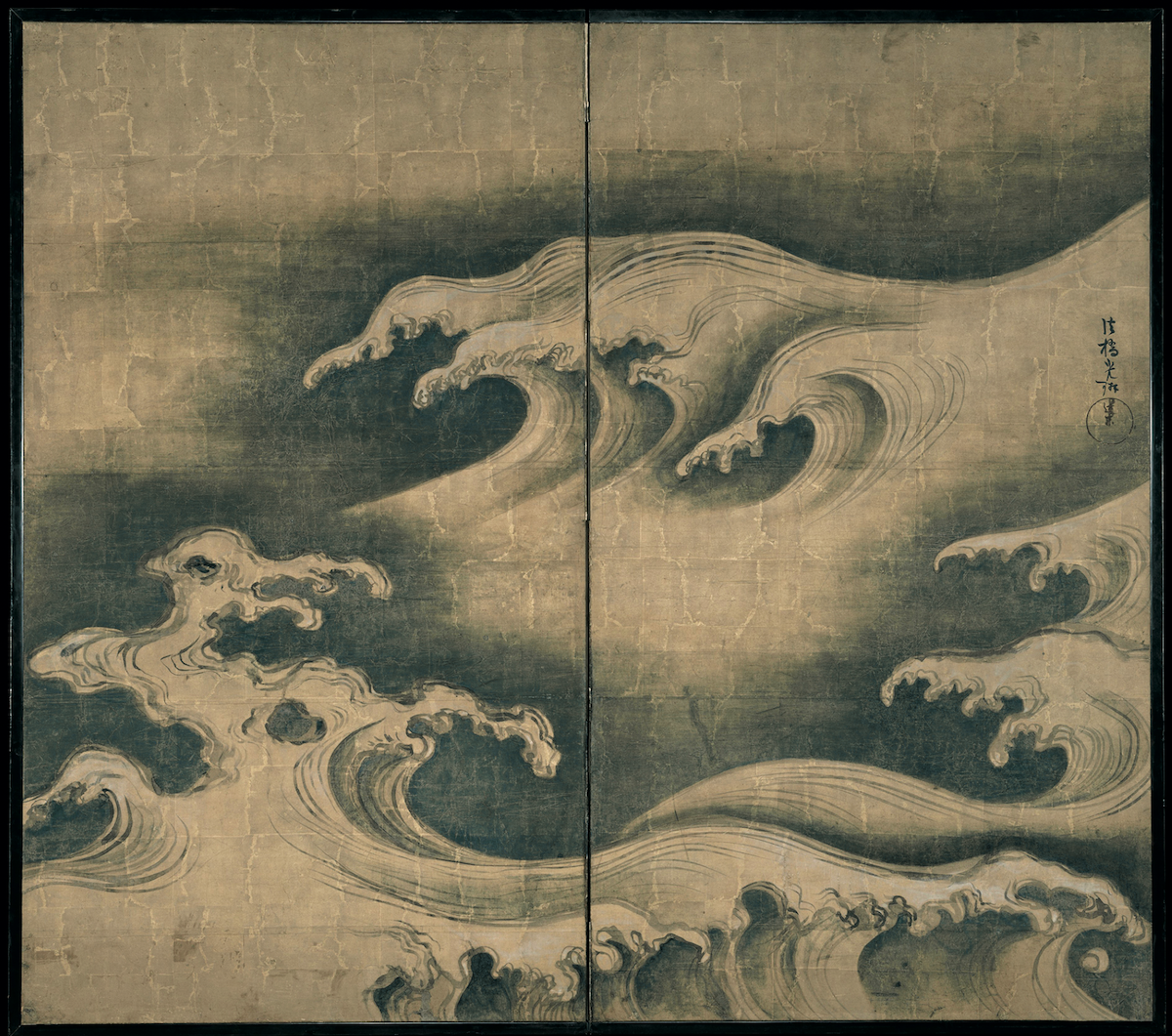
Ogata Korin, Screen of Waves, Ink and Gold Foil Screen Painting, 146.5 cm in length and 165.4 cm in width [US] Collection of the Metropolitan Museum of Art, New York
Although Katsushika Hokusai did not have the opportunity to witness Ma Yuan's "Water Picture" volume and Chen Hongshou's "Miscellaneous Painting Picture" volume, he is obviously quite familiar with the masterpiece "Waves Picture Screen" by the predecessor artist Korin Ogata. Created between 1704 and 1709, this double-sided screen is the most famous representation of the "inaccessible ocean" in Japanese painting prior to The Great Wave off Kanagawa. Different from Katsushika Hokusai's colorful ukiyo-e paintings, Ogata Korin used the traditional pure ink painting technique in my country when depicting the raging waves, and his interpretation of the waves was similar to Ma Yuan's "Water Picture" volume. This screen painting, which is more than a century earlier than "The Great Wave off Kanagawa", confirms from the side the subtle influence of my country's Song Dynasty landscape on Japanese painting. When Ogata Korin completed this work, "Mustard Seed Garden Painting Biography" had only been published in China for a few years. He must have come into contact with Song people's water painting techniques from other channels that we don't know yet, and his "Wave Picture Screen" may also be One of the opportunities for Katsushika Hokusai to come into contact with traditional Chinese landscape painting. In fact, "The Mustard Seed Garden Painting Biography", the painting work that inspired Qi Baishi, not only allowed Katsushika Hokusai to learn the most traditional and purest Chinese painting, but also allowed him to integrate his country's customs and artistic concepts with it. You know, in Chinese landscape paintings, there is almost no power of waves to affect the feeling and atmosphere of human life. Whether it is Ma Yuan's "Water Map" volume or Chen Hongshou's "Miscellaneous Paintings" album, the painters focus on the description of nature itself, rather than the conflict between man and nature. However, the indigenous Japanese painting tradition known as Yamato-e uses the power of ocean waves to highlight the struggle between man and nature. Hokusai's early work is rich in depictions of how water flows, oscillating between the decorative realm of linear patterns and the dramatic interpretation of humans wrestling with waves. In The Great Wave off Kanagawa, he is clearly trying to blend the dramatic conflict and powerlessness of man against the sea with the decorative depiction of the waves. And through the ingenious integration of water in Chinese landscape paintings and Yamato-style narration, supplemented by self-study observations of nature when he traveled to many places in his later years, Katsushika Hokusai's "The Great Wave off Kanagawa" actually formed a combination of personal style, Chinese techniques and Japanese art. A unique aesthetic that integrates local philosophy.
From Ma Yuan's "Water Picture" volume in the Southern Song Dynasty to Katsushika Hokusai's "The Great Wave off Kanagawa" and then to Van Gogh's "Starry Night", the three masterpieces were not only created in different eras and the painters have no intersection, but there are hidden things The mutual reference and influence between Chinese and Western art. In the eyes of many Western painting masters in the 19th century, Katsushika Hokusai's works not only have similarities with Western paintings, but also have unique ethnicity and originality. For Chinese audiences, it is difficult to regard the ukiyo-e art including "The Great Wave off Kanagawa" as original, because the painting contains too many visual elements and symbols learned, copied and borrowed from traditional Chinese paintings. Japanese painters in the 18th and 19th centuries obviously understood the landscape paintings of the Song Dynasty, and were also quite familiar with Chen Hongshou’s Ming and Qing figure illustrations. Therefore, in the era of Katsushika Hokusai, the overall atmosphere of ukiyo-e art could not be completely separated from the influence of traditional Chinese art. . However, the greatness of Katsushika Hokusai is that he has achieved the combination of East and West and the integration of China and Japan in masterpieces handed down such as "The Great Wave off Kanagawa". In the prints, the traditional Chinese way of expressing the waves is integrated with the native Japanese philosophy of the confrontation between man and nature. In fact, Katsushika Hokusai realized the perfect combination of Eastern and Western art through ukiyo-e in his later years, which also allowed the oriental graphic aesthetics to be widely accepted in Europe and the United States, and integrated into the waves of European Impressionism, Post-Impressionism, and Art Nouveau. Therefore, although the tiger-claw waves in The Great Wave off Kanagawa are not original, the synthesis of Eastern and Western aesthetics contained in the "past and present" of this work is not only unique at the time, but also worthy of its place in the history of world art today. lofty status.
Note: The author of this article is the honorary curator of the Liechtenstein National Museum. The original title of the article is "Katsushika Hokusai's "The Great Wave in Kanagawa" "Past and Present"", the full text was originally published in the 36th issue of "The Gate of Masters" of the Beijing Academy of Fine Arts, surging The news is republished with the authorization of the author.
